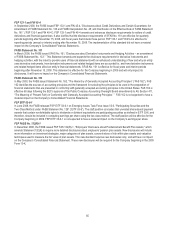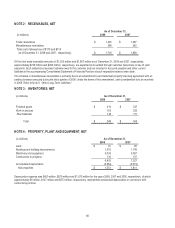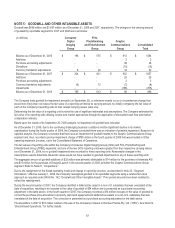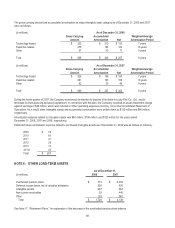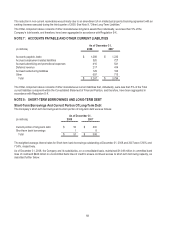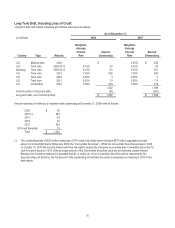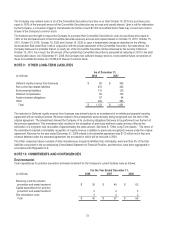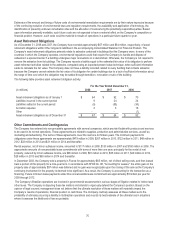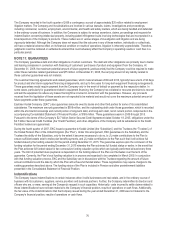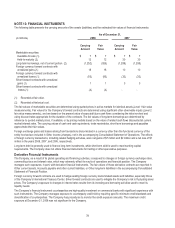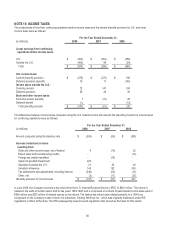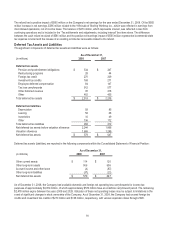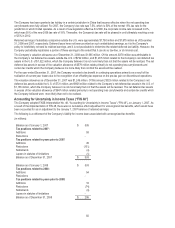Kodak 2008 Annual Report Download - page 77
Download and view the complete annual report
Please find page 77 of the 2008 Kodak annual report below. You can navigate through the pages in the report by either clicking on the pages listed below, or by using the keyword search tool below to find specific information within the annual report.
75
Estimates of the amount and timing of future costs of environmental remediation requirements are by their nature imprecise because
of the continuing evolution of environmental laws and regulatory requirements, the availability and application of technology, the
identification of presently unknown remediation sites and the allocation of costs among the potentially responsible parties. Based
upon information presently available, such future costs are not expected to have a material effect on the Company’s competitive or
financial position. However, such costs could be material to results of operations in a particular future quarter or year.
Asset Retirement Obligations
As of December 31, 2008 and 2007, the Company has recorded approximately $67 million and $64 million, respectively, of asset
retirement obligations within Other long-term liabilities in the accompanying Consolidated Statement of Financial Position. The
Company’s asset retirement obligations primarily relate to asbestos contained in buildings that the Company owns. In many of the
countries in which the Company operates, environmental regulations exist that require the Company to handle and dispose of
asbestos in a special manner if a building undergoes major renovations or is demolished. Otherwise, the Company is not required to
remove the asbestos from its buildings. The Company records a liability equal to the estimated fair value of its obligation to perform
asset retirement activities related to the asbestos, computed using an expected present value technique, when sufficient information
exists to calculate the fair value. The Company does not have a liability recorded related to every building that contains asbestos
because the Company cannot estimate the fair value of its obligation for certain buildings due to a lack of sufficient information about
the range of time over which the obligation may be settled through demolition, renovation or sale of the building.
The following table provides asset retirement obligation activity:
For the Year Ended December 31,
(in millions) 2008 2007 2006
Asset retirement obligations as of January 1 $ 64 $ 92 $ 73
Liabilities incurred in the current period 9 24 34
Liabilities settled in the current period (9) (55) (30)
Accretion expense 3 3 16
Other - - (1)
Asset retirement obligations as of December 31 $ 67 $ 64 $ 92
Other Commitments and Contingencies
The Company has entered into noncancelable agreements with several companies, which provide Kodak with products and services
to be used in its normal operations. These agreements are related to supplies, production and administrative services, as well as
marketing and advertising. The terms of these agreements cover the next one to thirteen years. The minimum payments for
obligations under these agreements are approximately $479 million in 2009, $207 million in 2010, $122 million in 2011, $49 million in
2012, $33 million in 2013 and $31 million in 2014 and thereafter.
Rental expense, net of minor sublease income, amounted to $117 million in 2008, $130 million in 2007 and $160 million in 2006. The
approximate amounts of noncancelable lease commitments with terms of more than one year, principally for the rental of real
property, reduced by minor sublease income, are $96 million in 2009, $81 million in 2010, $65 million in 2011, $49 million in 2012,
$28 million in 2013 and $68 million in 2014 and thereafter.
In December 2003, the Company sold a property in France for approximately $65 million, net of direct selling costs, and then leased
back a portion of this property for a nine-year term. In accordance with SFAS No. 98, "Accounting for Leases," the entire gain on the
property sale of approximately $57 million was deferred and no gain was recognizable upon the closing of the sale as the Company's
continuing involvement in the property is deemed to be significant. As a result, the Company is accounting for the transaction as a
financing. Future minimum lease payments under this noncancelable lease commitment are approximately $5 million per year for
2009 through 2012.
The Company’s Brazilian operations are involved in governmental assessments in various stages of litigation related to indirect and
other taxes. The Company is disputing these tax matters and intends to vigorously defend the Company’s position. Based on the
opinion of legal counsel, management does not believe that the ultimate resolution of these matters will materially impact the
Company’s results of operations, financial position or cash flows. The Company routinely assesses all these matters as to the
probability of ultimately incurring a liability in its Brazilian operations and records its best estimate of the ultimate loss in situations
where it assesses the likelihood of loss as probable.


